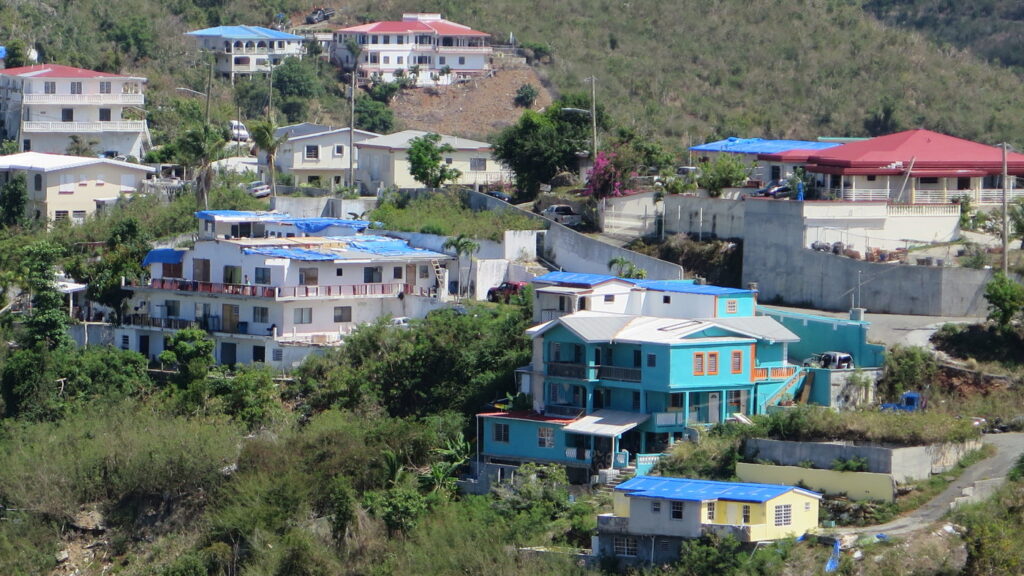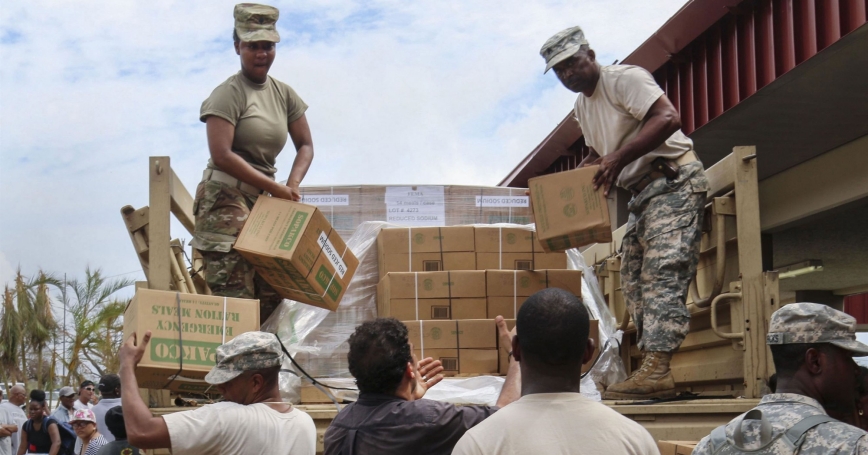ARLINGTON, Virginia — A new study by the Rand Corporation tells us what we already know —because we are living it here — the territory has been slow to recover from Hurricanes Irma and Maria in 2017.
Non-profit Rand says the U.S. Virgin Islands is still trying to turn the corner on Irma and Maria and that recovery efforts have “progressed at a slower pace than some other disaster recoveries in the United States and not as quickly as many Virgin Islanders would like.”
The Rand study, funded by the Federal Emergency Management Agency, produced a 385-page report, “Recovery in the U.S. Virgin Islands: Progress, Challenges, and Options for the Future,” which is available free online at RAND.org/pubs/research_reports/RRA282-1.html

Soon after Hurricanes Irma and Maria hit the U.S. Virgin Islands (USVI) in September 2017, recovery activities began. But more than three years after the hurricanes, the territory still has substantial recovery needs. The USVI government estimates that, to fully recover from the damage, it will need to execute $11.25 billion in recovery work—nearly three times its annual gross domestic product. Project timing, complexity, and scale add to the challenge. The recovery process is also a chance for the USVI to reenvision its future, leveraging recovery funding to create a more modern, resilient, and equitable territory.
The authors of this report aim to help the USVI accelerate its recovery by identifying key recovery goals and accomplishments to date, assessing roadblocks and challenges, and suggesting actionable recommendations to more efficiently implement recovery. They reviewed the USVI’s prior recovery plans, analyzed available data, considered good practice in other disaster recovery settings, and held more than 170 group discussions with stakeholders. They provide 76 recommendations to enhance recovery efforts, each including steps to support implementation.
The report covers multiple recovery needs: a set of crosscutting capacities required for progress in multiple sectors (management, fiscal, workforce, and supply chain), the rebuilding of physical infrastructure (infrastructure services, energy, housing, and natural and cultural resources), and the development of key aspects of the economy and public services (the tourism economy, education, and health).
Key Findings
The USVI has increased its management, fiscal, workforce, and supply-chain capacity
- It has started permanent improvements to infrastructure, public buildings, and housing and restored education and critical health care services.
- Key accomplishments include creating the Office of Disaster Recovery to oversee recovery, designating federal block grant funds for public projects, training staff, using contractors to boost territory government management capacity, making plans to upgrade existing infrastructure, identifying funding options to restore housing, and working to restore natural and cultural Key accomplishments include creating the Office of Disaster Recovery to oversee recovery, designating federal block grant funds for public projects, training staff, using contractors to boost territory government management capacity, making plans to upgrade existing infrastructure, identifying funding options to restore housing, and working to restore natural and cultural resources.
The USVI faces multiple barriers and challenges to recovery
- Crosscutting structural issues have impeded the USVI’s ability to manage, finance, and execute recovery efforts. Improving capacity is therefore foundational to implementing recovery. If these are not addressed, recovery will likely continue to be significantly delayed. Particular capacity challenges include complex government management staffing and coordination needs; difficulty in navigating the financing of recovery; a shortage of more than 5,000 workers to support recovery; and constraints on supply-chain capacity, especially in acquisition and distribution.
- Multiple barriers delay recovery of physical infrastructure. These include the sheer amount of damage requiring restoration and long-standing financial, institutional, and technical issues associated with aging infrastructure. Interdependencies among reconstruction projects call for coordination and prioritization among projects.
- Recovery of the tourism economy, education, and health faces constraints related to infrastructure, workforce, regulatory, and other factors. Other challenges related to these include ongoing pressures on individuals’ well-being after the storms, gaps in services for vulnerable populations, and difficulty in adapting infrastructure, institutions, and plans to future needs.
Recommendations
- Focus on improving crosscutting management, fiscal, supply-chain, and workforce capacities because these are foundational to recovery in all sectors.
- Create clear recovery governance by adequately resourcing recovery agencies, enhancing coordination mechanisms across the USVI government, and creating metrics for recovery progress.
- Expand liquidity and financing options by developing a central recovery spending budget with sequenced spending plans and considering additional private-sector and FEMA financing mechanisms.
- Streamline contracting by developing templates and additional approval contracting mechanisms.
- Support the capacity of territory agencies by enabling hiring of additional staff and targeting technical assistance to agencies making slower progress.
- Build the recovery workforce by expanding temporary housing for off-island workers and providing additional training for USVI residents.
- Enhance supply-chain efficiency by increasing berth capacity and stockyard storage in ports.
- Improve the management of infrastructure services by prioritizing projects that address both hurricane damage and legacy challenges, coordinating infrastructure interdependencies during reconstruction, consolidating recovery funding management under a lead agency, conducting land and water use planning, and raising awareness of risks to natural and cultural resources.
- Increase affordable housing by speeding up repairs on damaged homes, clarifying property ownership, expanding temporary housing, and preventing displacement of residents.
- Improve service provision by streamlining business approvals, expanding the use of telemedicine, improving access to mental health resources, continuing quality initiatives in education and health, and expanding services for vulnerable populations.
- Establish a vision of the future of USVI’s service sectors by developing plans to adapt to evolving population needs, labor market requirements, and tourist preferences.



